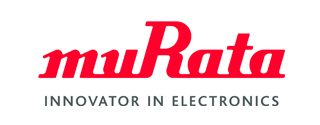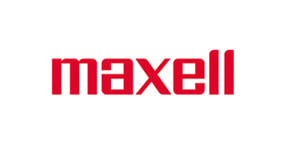Tips for repairing or upgrading battery packs
Some batteries in commercial devices, such as power tools, can be upgraded or rebuilt by changing one or all of the cells of their battery pack. It is a simpler endeavor to replace the cells in battery packs consisting of Ni-MH cells than it is to replace those in a lithium-based pack. One of the reasons for this is that recognized battery manufacturers who produce the cells often limit sales to certified battery pack assemblers purchasing in high volumes. This makes locating the required cells to rebuild your pack more difficult.
Let’s start by providing some general tips then focus on Li-ion specific advice.
One of the things to consider is whether you should replace one cell or all the cells. With new battery packs with only one or two cells that are defective, it might make sense to replace just those cells particularly if they are readily available. The same does not hold true for a battery pack that is aged. A mismatch of newer cells with older ones will result in a shorter life. Battery packs function optimally when all constituent cells have similar capacities, which would not be the case with a mismatch of cells in an older device. As a chain is only as strong as its weakest link, so will the functionality of your device be determined by the weakest battery in your pack.
Cell manufacturers are unable to fully control factors like tolerance which means that there is a discrepancy among cells, some being higher or lower than others. When we consider a single-cell battery pack such as you might have in a mobile phone, there would be no noticeable discrepancy to the user. But a device that uses multiple cells in its pack, a power drill for example, requires tighter tolerances and uniformity, the absence of which would be noticeable in the diminished performance of the device.
There are three key factors that indicate the health of any cells you might salvage from an old pack to use as replacements:
- Capacity. Test the cells capacity with a quality battery analyzer and make sure to accurately mark it for later matching with other cells of similar capacity.
- Internal resistance should be equivalent to that of a good cell.
- Self-discharge. A cell with electro-mechanical stress contributes to an elevated self-discharge rate. A fully charged Lithium-ion cell will self-discharge at +/-5mV after a 24-hour period.
Theoretically, it might seem plausible to replace a nickel-cadmium cells with nickel metal hydride since they are both from the same nickel-based family of batteries and share the same voltage, but not in practice. The problem lies in charging demands of each chemistry, specifically trickle charging and full charge detection. Ni-MH uses a charging algorithm that is more sophisticated than Ni-CD. While a modern quality Ni-MH battery charger could handle both chemistries, an old Ni-CD charger may not detect the full-charge status of an Ni-MH battery and apply an excessive trickle charge that result in an overcharge. Each chemistry essentially needs its own charger unless otherwise indicated by the manufacturer.
Achieving a reliable connection among your cells will require spot-welding. Keep in mind that the skin is conductive. To prevent any damage to your cells, each cell should be electrically insulted. Variable charge levels among the pack’s cells should be first synchronized simply by applying a slow charge to bring them to the same level. It is normal for nickel chemistry cells to warm up toward the end of their charge cycle. They must, however, feel cool to the touch when the charger indicates their readiness. Lithium-ion cells should remain cool throughout their charge duration. So, it is important to keep an eye on your cells as they charge making sure that any rise in temperature among them is equal; irregularity in heat among the cells points to a potential anomaly that should be investigated.
Once you have rebuilt your battery, it is advisable to measure its voltage after 24 hours, and if possible, in the days that follow. An open circuit voltage (OCV) that falls below a battery pack of the same model hints towards elevated self-discharge.
Lithium-ion battery packs
With Li-ion battery packs, make certain that all the lithium batteries in your pack are correctly reconnected to its protection circuit to avert damage or failure. Single-cell packs and power tool battery packs may have simplified circuits, but all Li-ion batteries must have a protection circuit to manage their state. The circuit will report data and balance the cells to protect your battery pack and control its environment. This does not apply to Ni-MH and Ni-CD battery pack cells.
Care must be taken when it comes to the interchangeability of lithium-ion cells. Unlike lead-based and nickel-based rechargeable batteries which share similarities with regard to cell voltage, the newer lithium-ion chemistry veers in a different direction. Variable voltages exist reflecting its chemistry nuances. For example, the nominal voltage of the typical lithium-ion, such as an 18650 battery, is 3.6 volts and charges to 4.2 volts, and others charge to 4.1 volts to meet specific needs. Energy Cells top at 4.35V/cell and higher. The nominal cell voltage of a li-phosphate battery is 2.4 volts with a charge limit of 3.65 volts per cell, and a Li-titanate battery carries a lower cell voltage of 2.4 volts and a limited charge of 2.85 volts. This illustrates that lithium cells are certainly not interchangeable.
Apart from variable chemistries, the cobalt-blended Li-ion offers variable capacities. For high current and decreased capacity, there is the Power Cell, and for moderate loads, there is the Energy Cell. If you are replacing the cells of a power tool battery pack, for example it is important to use Power Cells with uniform specifications. Electric bikes and laptops, on the other hand, generally use Energy cells. Hybrid cells are also readily available that can be used for both applications.
It is also important not to skimp on the quality of your cells by going cheap. The failure of a battery pack's performance is often attributable to the use of inferior cells. Many aftermarket cells do not undergo rigorous quality (or safety) checks or are intentionally produced below par quality by unknown or scrupulous manufacturers. For example, lithium-ion 18650 batteries, which have grown popular due to their reliability and wide range of applications, are frequently mass manufactured for distribution by unknowing or less reputable vendors. It is commonplace to hear of companies and individuals taking advantage of substantial price markdowns, only to experience failing battery packs within a few short years of service due to cell failures. Caveat emptor.
Microbattery.com offers battery pack rebuilding. We would be happy to help.
You can also learn more about rechargeable batteries and battery chargers with these great articles:
Factors to consider when choosing a battery charger
Practical guide to charging different types of batteries
Smart battery technology and usage tips










